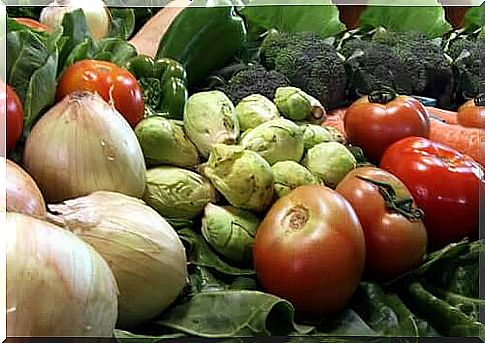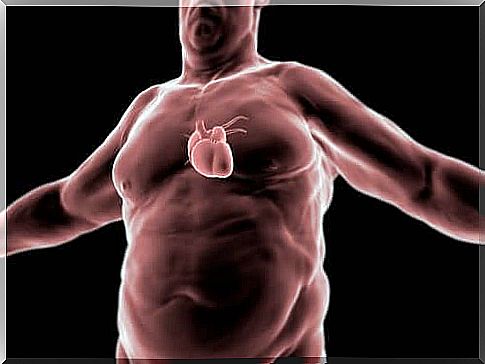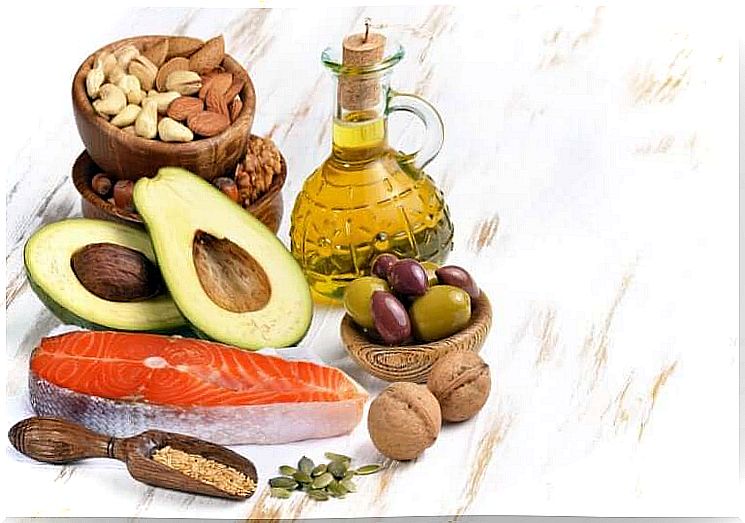The Ketogenic Diet: What Does It Consist Of?

Losing weight means gaining in terms of health. This is the premise of those who are overweight and want to improve their life. The ketogenic diet is one of the alternatives that is proving to have a good chance of success.
It is a diet that provides a significant reduction in the consumption of carbohydrates. The goal is to promote the oxidation of fats and make the body a more effective machine for burning them.
This process leads to the formation of ketone bodies, which are generated when few carbohydrates and moderate amounts of healthy proteins and fats are ingested. Ketones are used by our body as a backup fuel when the blood is low in sugar.
The ketogenic diet offers more energy
The ketogenic diet would therefore seem ideal for losing weight. With this practice, insulin levels are lowered and fat becomes the main fuel for the body. In this way, the fat deposits become more vulnerable and losing weight is no longer an impossible dream.
The liver plays an important role in this process. In fact, it is in charge of transforming fats into ketone bodies that will nourish the muscles, heart and brain. The result is that you feel full, less hungry and have a greater supply of energy throughout the day. The rule, in a nutshell, is to eat more fat and fewer carbohydrates.
More greens and vegetables
This type of diet acts as a switch: it generates many internal and external changes. If the premise is to consume fewer carbohydrates, what should never be lacking are vegetables.

According to the basic rule of this diet, you can only consume 50 grams of carbohydrates per day, which corresponds to about a pound of bread. Consequently, it is necessary to avoid flours, legumes, refined sugars, potatoes and some fruits.
The calories instead focus on the consumption of healthy proteins and fats such as olive oil, nuts and avocado. Fish, lean meats and chicken are also recommended.
Benefits of the ketogenic diet
There are several benefits it offers to our body. For example:
1. Greater control of appetite
This is an effect that low-carb diets have in common. By increasing the percentage of protein and healthy fats on the menu, the satiating power of foods is greater. Therefore, fewer calories are introduced and weight is lost.

2. It is easier to lose weight on the ketogenic diet
Less carbohydrates, less pounds. With the ketogenic diet, you can lose up to two to three times more weight than with a simple fat reduction diet. In addition, it is possible to maintain the weight achieved longer.
3. Reduction of visceral fat
When we talk about fat, we do not only mean that which is visible in the mirror, but also the layer that surrounds the internal organs. It is called visceral fat and is more dangerous than body fat, since it is one of the main causes of metabolic syndrome.
4. Lower risk of heart disease
The ketogenic diet improves cholesterol levels because a higher percentage of good HDL and LDL-C cholesterol is produced.
At the same time, the triglyceride rate and blood pressure are lowered. This way there is a lower risk of suffering from cardiovascular disease.

5. Regulates insulin and fights diabetes
The ketogenic diet guarantees greater control over the presence of glucose in the blood thanks to greater insulin sensitivity. People diagnosed with diabetes can reduce drug doses by carefully following this diet.
Disadvantages of the ketogenic diet
When starting a new meal plan, it is important to also take into account possible adverse reactions. Despite the undoubted advantages offered, there are some aspects of this diet that must be taken into account.

1. Less vitamins and minerals
Since this is a diet based on the consumption of proteins and fats, the lower consumption of fruit causes a reduced intake of vitamins, minerals and fibers. One of the consequences can be constipation.
2. Halitosis
The reduction of carbohydrates in the diet and the production of ketone bodies can cause bad breath. In some cases, it also increases the feeling of tiredness and fatigue.
Fat yes and fat no in the ketogenic diet
In this meal plan, fats play a crucial role. However, it is important to understand which fats can be consumed and which are to be discarded. In our choice we must remember, first of all, that processed or industrial products almost always cause damage to the body.

1. Very healthy fats
- Fish
- Eggs
- Dried fruit
- Omega 3
- coconut
2. Healthy fats
- Lean meats
- Butter
- Milk
- Cheese
- Olive oil
- Avocado
- Pistachio
3. Unhealthy fats
- Margarine
- Confectionery
- Fried
Ultimately, the ketogenic diet is one of the options to consider if you intend to change your eating style. In fact, there are many benefits it offers and few disadvantages to pay attention to.
Remember to always follow your doctor’s advice. For those looking to lose weight, the nutritionist should always be the main guide. If this diet has caught your interest, talk to your doctor, it will help you make the best decision based on your health condition.









